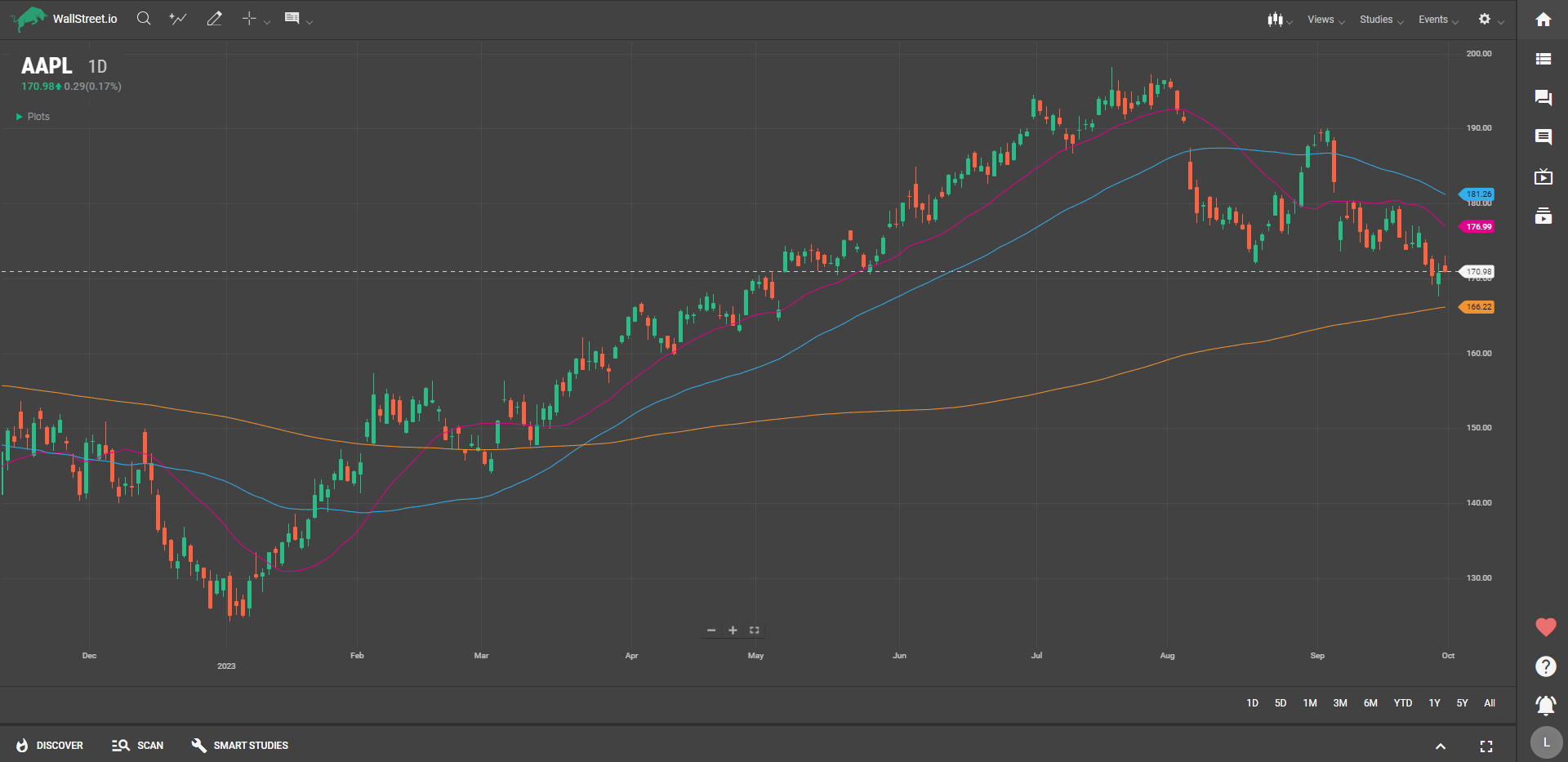
Moving Average Cross
Definition
The Moving Average Cross employs three Moving Averages (typically 20, 50, and 200 periods Simple Moving Averages by default) to signal shifts in market trends. When a shorter-term moving average crosses above a longer-term moving average, it often indicates an upward trend, and vice versa.

Suggested Trading Use
Watch for the moments when the shorter moving averages cross the longer ones. If the 20-period moving average crosses above the 50-period or 200-period moving averages, it's often seen as a bullish sign, and you might consider entering a long position. On the flip side, if the 20-period moving average crosses below the longer ones, it could be a bearish signal, suggesting it might be time to sell or enter a short position. Utilize these cross signals to time your entries and exits more effectively.

 Discover Tab Reference Guide
Discover Tab Reference Guide Discover Tab How-To Guide
Discover Tab How-To Guide Smart Studies How-To Guide
Smart Studies How-To Guide Smart Studies Reference Guide
Smart Studies Reference Guide Scan Tab Reference Guide
Scan Tab Reference Guide Scan Tab How-To Guide
Scan Tab How-To Guide Watchlists How-To guide
Watchlists How-To guide Watchlists Reference Guide
Watchlists Reference Guide Chatrooms Reference Guide
Chatrooms Reference Guide Community Wall How-To Guide
Community Wall How-To Guide Community Wall Reference Guide
Community Wall Reference Guide Streams Reference Guide
Streams Reference Guide Streams How-To Guide
Streams How-To Guide